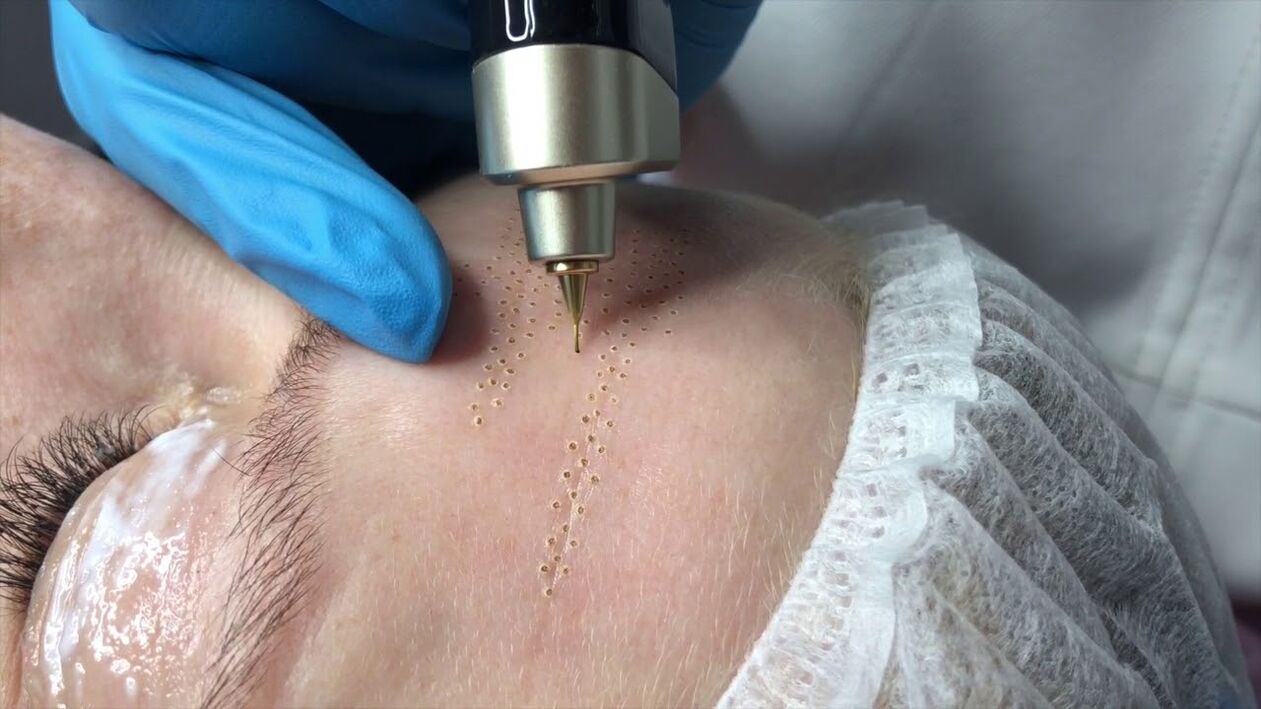Skin rejuvenation is the most popular field in modern aesthetic cosmetology. Moreover, today, more and more, progressive non-invasive methods (without compromising the integrity of the skin) and even non-contact methods of exposure are preferred. And one of the innovative and effective methods is plasma rejuvenation (non-surgical plastic).

Most, if not all, types of skin rejuvenation are based on the principle of controlled damage to the skin, stimulating the regeneration process, leading to a decrease in the visible signs of aging. The plasma method works in the same way, but with a few tricks.
First, the active substance, plasma, is a high-energy ionized gas. Secondly, the nitrogen used is chemically inert and burns the tissue, eliminating the oxygen necessary for the oxidation process. As a result, plasma damages the layers of the skin (due to heating, splitting and evaporation), but they do not burn as under the action of an ablative laser, thus no open wound is created. This approach reduces the risk of side effects such as scars, infections and discoloration.
What to expect from plasma rejuvenation
Reduce age-related changes, prevent their progression and early appearance. The procedure has a pronounced lifting effect (due to the "evaporation" of the skin coating), relieves skin irritation by reducing the depth of dynamic and static wrinkles, softens the course of natural folds, improves and enhances tonethe skin. Moreover, not only does the result appear shortly after the start of the course of treatment, but it gradually increases over several months. The greatest effect can be expected after about 3 months.
Indications for use
- Non-surgical blepharoplasty.
- Treat stretch marks and get rid of scars.
- Acne and post-acne treatment.
- Eliminate wrinkles around the eyes (feet), around the mouth (pouch).
- Eliminate skin laxity: on the neck, abdomen (postpartum abdomen).
- Align human contour.
- Elimination of fibroids, nevi, papillomas, age spots, xanthelasm, dyskeratosis.
Contraindications
- Diagnosed oncological diseases no localization.
- Presence of suspected skin diseases in the affected or suspected area. Other benign neoplasms are not contraindications for plasma rejuvenation.
- ENT diseases in the acute phase (sinusitis and other types of sinusitis, rhinitis, rhinosinusitis).
- Pregnancy period. At the same time, the procedure has a relatively high safety profile, since it does not lead to systemic (general) and pronounced metabolic changes. And in medical publications there are reports of successful use of plasma rejuvenation among women who carry a baby. But it should not be forgotten that hormonal physiological changes during pregnancy affect the condition of the skin and can alter the effectiveness of the procedure.
- Breastfeeding period.
- Diseases of the blood, but at the same time, the presence of mild iron deficiency anemia is usually not a reason to deny the satisfactory health of the anti-aging procedure.
- Acute period of infectious diseases, the presence of increased body temperature.
- Diseases of the thyroid gland, accompanied by local or diffuse hypertrophy of its tissue and / or hormonal changes.
- Renal and hepatic impairment.
- Cardiovascular diseases in the detoxification phase.
How the procedure is performed
Plasma facial rejuvenation does not require special training, prior adherence to any diet, or changes in normal lifestyle. But a few days before the session, it is recommended not to use aggressive scrubs and peels, to visit a solarium, and people who are prone to allergic reactions should not try new products and cosmetics.
When using the device, local anesthesia is not required even for patients with low pain thresholds. The healing / refresher session lasts 15-30 minutes, depending on the severity of the problem and the area of the treated area.
The patient is seated in a cosmetology chair or on a couch, and the specialist performing the procedure, without contact, directs a pulse or plasma flow from the top of the device to his skin. At the same time, it is possible to choose the most appropriate mode of operation for a particular patient. The session usually begins with pretreating the skin to prepare it for stronger effects afterwards and to reduce the intensity of the sensations that occur. After the procedure is completed, the treated area does not need to be applied. For the next 3 days, it is recommended to refrain from scrubs, peels, visits to the beach and solarium.
The recommended number of procedures is 1-2 procedures per year.
























































